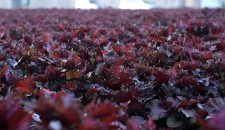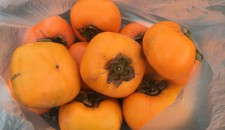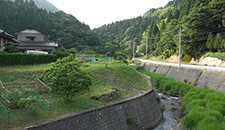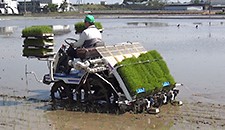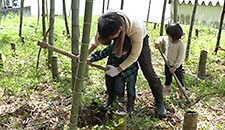Pounding rice cakes ( Mochi-tsuki )
2020.06.23

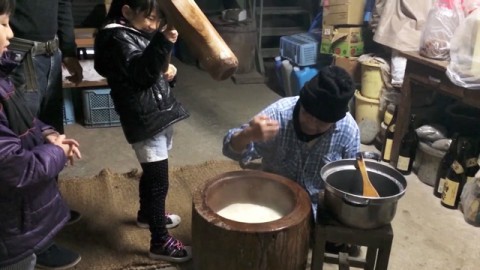
Not so long ago, most of the people in Japan used to do “Mochi-tsuki" (pounding rice cakes) at the end of every year traditionally. It has now become a rare sight. But in this house which is in the suburbs of Fukui city, the whole family still gathers around every year for the “Mochi-tsuki".
The mochi-tsuki last year was held on the morning of December 30th, it started in a barn at the corner of the yard.
On that day, children (lower graders of elementary school) who are their relatives came to help the family, they held a “Kine" ( mallet ). They can pound with the kine only about 10 times, I am sure they will become a full-fledged “Tsuki-te" (a person who pounds the mochi with kine) after some years.
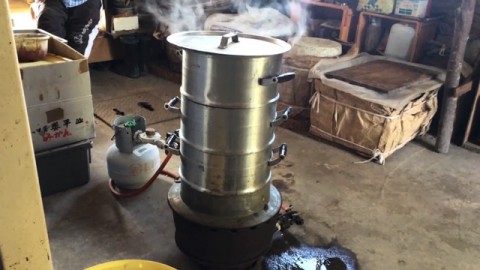
While they are pounding mochi, they keep steaming the ingredient of mochi, “Mochi-gome" (glutinous rice) one after another in a “Seiro" (a steaming basket) outside the room.
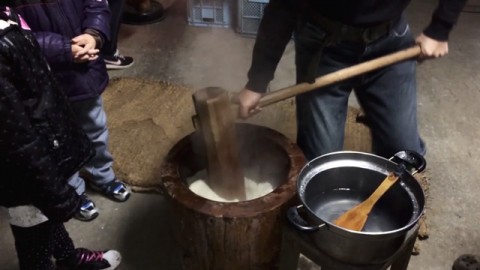
As soon as mochi-gome was steamed, they start pounding rice cakes. First, to avoid the rice goes out of the mortar, they pound it with “Kozuki" move in which they grind and mix the rice to make it sticky.

As the rice starts becoming sticky, then they start “Honzuki" (continuing pounding the rice grains which has lost their shape over and over again until it becomes completely smooth). “Pettan! Pettan!" goes the rhythmical sound of mochi being pounded and now it looks like what is known as “Mochi-tsuki".
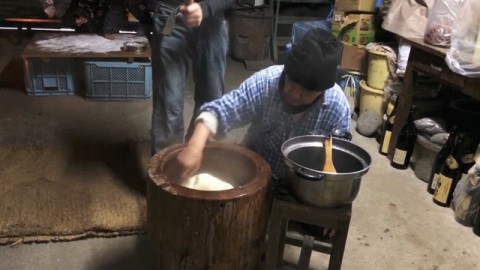
It looks hard to pound it with “Kine". Actually the most important part of pounding rice cakes is an “Usutori". The “Usutori" turns the rice upside down to make it pounded equally and quickly until the kine beats the rice. Breathing in sync between the usutori and the tsuki-te is the key for making mochi.

When grains of rice disappear and became smooth, the whole family cut it into small pieces and shaped them into small balls neatly.
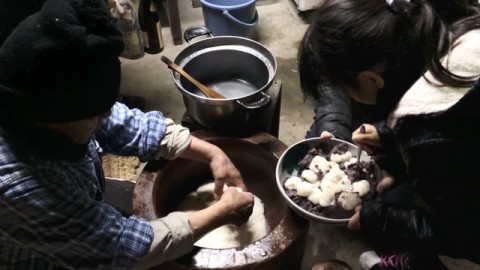
Last one is called “Tsuki-iri" which has more water than first one and gets pounded more to be made softer. They cut it and put it directly into cups which has sweet bean paste and so on. They eat the fresh-cooked one. There are three condiments which are grated radish with soy sauce and dried bonito, sweet bean paste and soybean flour. The favorite for all including the children was with grated radish and soy sauce.


